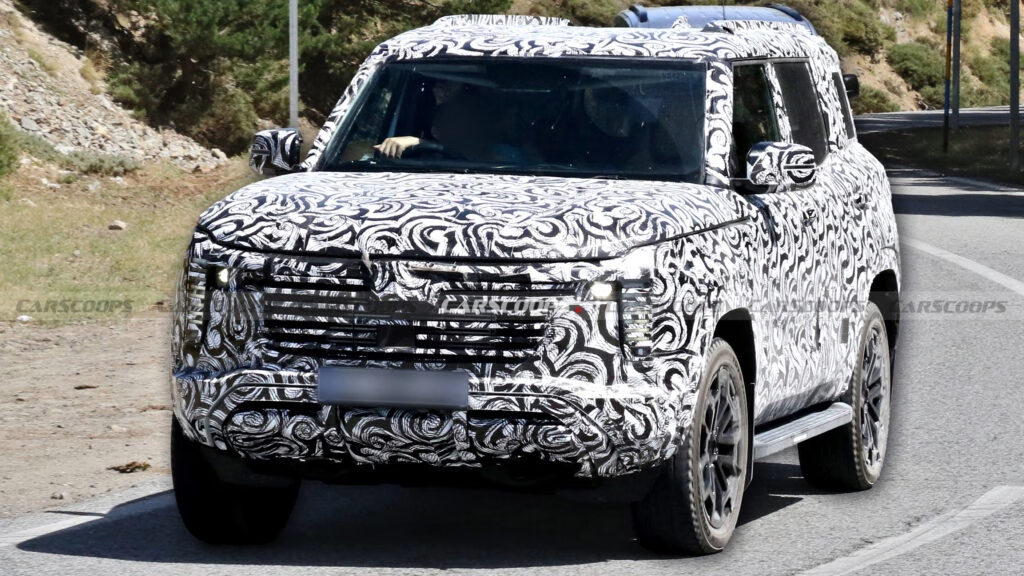Is Mitsubishi Finally Bringing Back the Pajero? What the Latest Spy Shots Reveal
Why Is There So Much Buzz Around Mitsubishi’s New Camouflaged SUV?
If you’ve been following the off-road scene, you’ve probably noticed the recent surge in excitement over a camouflaged Mitsubishi SUV spotted testing in Southern Europe. The photos have set forums and social media alight, and for good reason: this prototype looks like it could be the long-awaited successor to the legendary Pajero. But what exactly are we looking at—and why does it matter so much?
The Pajero, known as the Montero or Shogun in some markets, was once a staple among adventure seekers and families alike. Its reputation for durability and go-anywhere capability made it a favorite for decades. When Mitsubishi discontinued it, many fans felt the void. Now, with this new prototype sporting a boxy, upright stance and production-ready details, it’s no wonder speculation is running wild.
Is This the Next Pajero, Pajero Sport, or Something Else Entirely?
Let’s cut through the rumor mill. Some insiders suggest this SUV will revive the Pajero nameplate, possibly as a luxurious plug-in hybrid to rival the likes of the Range Rover. Others think it might be a replacement for the Pajero Sport, with Mitsubishi dropping the “Sport” badge altogether. There’s even talk that it could be the production version of the DST concept, a seven-seat unibody SUV aimed at Asian markets.
The confusion isn’t just about names. The real debate centers on what’s underneath. Will Mitsubishi stick with a rugged ladder-frame chassis, like the one used in the Nissan Patrol and Triton pickup? Or will they pivot to a more modern unibody platform, similar to the Outlander? Each choice would steer the new SUV in a very different direction, both in terms of performance and market appeal.
How Does the Design Compare to Past and Present Mitsubishi SUVs?
One glance at the spy shots, and it’s clear Mitsubishi is leaning into classic off-roader cues. The prototype ditches the awkward test mule disguises for a look that’s almost showroom-ready. There’s a tall, squared-off profile, an upright nose, and proportions that scream capability. Up front, vertically-stacked LED daytime running lights flank a wide grille and a bold skid plate—details that wouldn’t look out of place on a modern Land Cruiser or Patrol.
Along the sides, the greenhouse hints at the DST concept, while the rear features connected LED taillights and a chunky skid plate that doubles as a diffuser. Compared to previous Pajero Sport test mules, this prototype’s proportions look subtly different—shorter front overhang, more upright windshield, and a stance that feels more purposeful.
What Platform Will the New SUV Use—and Why Does It Matter?
Here’s where things get interesting. The platform will dictate everything from powertrains to off-road chops. If Mitsubishi builds the new SUV on the Outlander’s CMF-C/D architecture, expect a plug-in hybrid setup with around 302 horsepower—enough to make it a serious contender in the electrified SUV space.
But if they stick with a ladder-frame chassis shared with the Triton, the focus will likely be on a 2.4-liter turbodiesel engine (up to 201 hp), with electrification possibly joining the lineup later. This would keep the SUV in the same league as the Toyota Fortuner and Ford Everest, both of which are popular in markets where ruggedness trumps outright luxury.
A third, less likely option is a platform borrowed from the Nissan Patrol, which would mean a beefier twin-turbo V6 and a much heavier vehicle. And then there’s the DST concept route: a front-wheel-drive, 1.5-liter gasoline engine with just over 100 hp. Realistically, that last option feels like a stretch for anything wearing the Pajero badge.
When Could We See the Production Model—and What’s at Stake?
Judging by the level of finish on the prototype, Mitsubishi is deep into development. Industry analysts and spy photographers agree: a full reveal could happen before the end of 2025. That’s not just idle speculation—Mitsubishi has been hinting at a return to the global SUV stage, and this model could be their ticket.
The stakes are high. The SUV market is more competitive than ever, with buyers demanding everything from hybrid efficiency to genuine off-road prowess. If Mitsubishi gets the formula right, they could reclaim a slice of the market that’s been dominated by Toyota, Ford, and Nissan in recent years.
What Should Buyers and Fans Expect from the New Mitsubishi SUV?
If you’re hoping for a Pajero that blends old-school toughness with modern tech, there’s reason to be optimistic. Mitsubishi’s recent moves—like investing in plug-in hybrid technology and updating their design language—suggest they’re serious about making a splash. Expect advanced safety features, a well-appointed interior, and enough capability to handle real-world adventures.
Still, until Mitsubishi officially pulls the wraps off, there’s a lot we don’t know. Will it be a true Pajero, a Pajero Sport replacement, or something entirely new? Will it prioritize luxury, off-road ability, or a bit of both? The answers will shape not just Mitsubishi’s future, but the choices available to SUV buyers worldwide.
The big takeaway? Mitsubishi’s next SUV isn’t about perfection—it’s about smarter adjustments. Start with one change this week, and you’ll likely spot the difference by month’s end. Whether you’re a die-hard Pajero fan or just SUV-curious, keep your eyes peeled—this is one comeback story you won’t want to miss.

